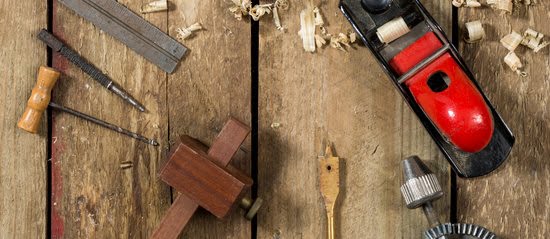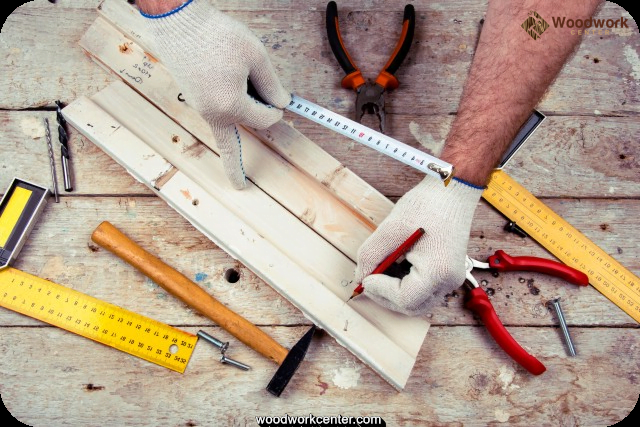Woodworking is a rewarding and creative endeavor, but it also comes with its own set of risks and hazards. In order to ensure a safe and productive work environment, it is crucial to understand the importance of following safety rules in woodworking. By adhering to proper safety guidelines, woodworkers can significantly reduce the risk of accidents and injuries, ultimately creating a more secure workspace.
In woodworking, the use of power tools, sharp equipment, and heavy materials presents numerous potential hazards. This is why it’s essential for woodworkers to prioritize safety at all times. From wearing the right personal protective equipment (PPE) to maintaining a clean and organized workspace, there are several key safety rules that must be followed to prevent accidents and ensure the well-being of everyone involved in the woodworking process.
Throughout this article, we will delve into the significance of safety rules in woodworking, highlighting the importance of hazard awareness, proper machine operating procedures, maintaining a tidy workspace, and promoting a culture of responsibility when it comes to safety. By understanding these crucial aspects of woodworking safety, individuals can create an environment where accidents are minimized, productivity is maximized, and everyone can enjoy their craft safely.
Importance of Personal Protective Equipment (PPE) in Woodworking
Personal Protective Equipment (PPE) is essential in woodworking to ensure the safety and well-being of workers. Here are some key points highlighting the importance of PPE in woodworking:
1. Protection from flying debris: Woodworking often involves cutting, shaping, and sanding wood, leading to the creation of flying wood chips and sawdust. Wearing safety goggles or a face shield can help prevent eye injuries caused by these particles.
2. Respiratory protection: Wood dust can pose respiratory hazards, leading to health issues such as asthma or lung disease. Utilizing an appropriate mask or respirator can mitigate the risk of inhaling harmful dust particles.
3. Prevention of hearing damage: The usage of loud machinery in woodworking can lead to noise-induced hearing loss over time. Ear protection such as earplugs or earmuffs is crucial for minimizing this risk.
In addition to these points, it is important to emphasize the significance of wearing proper clothing and footwear for protection against potential cuts, burns, or slips in a woodworking environment.
Following safety rules in woodworking includes adhering to guidelines regarding Personal Protective Equipment (PPE) usage that play a vital role in ensuring the well-being of workers and preventing potentially life-altering accidents and injuries. By following these rules and using PPE correctly, individuals can significantly reduce their risk of harm while working with wood.
- Wear safety goggles or a face shield to protect eyes from flying debris
- Utilize an appropriate mask or respirator for respiratory protection
- Use ear protection such as earplugs or earmuffs to prevent hearing damage
- Dress in appropriate clothing and footwear for overall bodily protection
Common Woodworking Hazards and the Importance of Hazard Awareness
Woodworking involves various tools and machines that can pose significant risks if not used properly. It is essential for woodworkers to be aware of the common hazards present in their work environment and understand the importance of hazard awareness. By acknowledging potential dangers, woodworkers can take necessary precautions to prevent accidents and injuries.
Some common woodworking hazards include:
- Sharp Tools: Hand tools such as chisels, saws, and planes can cause cuts and lacerations if mishandled.
- Dust and Fumes: Wood dust and fumes from varnishes or adhesives can pose respiratory hazards if proper ventilation and protective equipment are not used.
- Machinery Accidents: Injuries can occur from using machinery such as table saws, routers, and planers without following safety procedures.
Understanding these hazards is crucial in promoting a safe working environment. Woodworkers need to be aware of the potential risks associated with their tasks and take proactive measures to mitigate them.
By recognizing the importance of hazard awareness in woodworking, workers can prioritize safety by:
- Wearing appropriate personal protective equipment (PPE) such as goggles, respirators, and gloves to minimize exposure to hazards.
- Familiarizing themselves with safety guidelines for each tool and machine they use.
- Maintaining a clean workspace to reduce the risk of slips, trips, and falls.
Overall, being mindful of common woodworking hazards allows woodworkers to adopt a safety-first mindset, ultimately reducing the likelihood of accidents or injuries in the workshop. By consistently practicing hazard awareness, woodworkers contribute to creating a safer and more secure work environment for themselves and their peers.
Understanding the Role of Safety Rules in Preventing Accidents and Injuries
Woodworking can be a satisfying and rewarding pursuit, but it also comes with its fair share of risks. Accidents and injuries are all too common in woodworking, which is why understanding the role of safety rules in preventing these mishaps is crucial. By following safety rules, woodworkers can significantly reduce the likelihood of accidents and injuries in their workshops.
The Importance of Risk Assessment
One of the key aspects of safety rules in woodworking is the importance of conducting a thorough risk assessment before starting any project. This involves identifying potential hazards in the work environment and assessing the risks they pose to workers. By understanding potential dangers, woodworkers can take steps to mitigate these risks and create a safer working environment.
The Role of Training and Education
Proper training and education are essential in preventing accidents and injuries in woodworking. Woodworkers need to be well-versed in not only how to operate tools and machinery safely but also how to recognize hazards and effectively use personal protective equipment (PPE). Training empowers woodworkers with the knowledge and skills they need to work safely and avoid accidents.
The Impact on Productivity
In addition to preventing accidents and injuries, following safety rules also has a positive impact on productivity in woodworking. When woodworkers prioritize safety, they can work more efficiently without worry or fear of injury. This leads to higher morale, better quality work, and ultimately a more productive workshop overall. Therefore, prioritizing safety through following established rules contributes not only to physical well-being but also overall business success.
Importance of Following Proper Machine Operating Procedures in Woodworking
Woodworking involves the use of various machines and tools, making it crucial to follow proper operating procedures to ensure safety in the workshop. The importance of following these procedures cannot be overstated, as it not only reduces the risk of accidents and injuries but also contributes to a more efficient and productive woodworking environment. By adhering to the recommended operating procedures for each machine, woodworkers can significantly minimize the potential dangers associated with equipment use.
One of the key reasons for following proper machine operating procedures in woodworking is to prevent accidents and injuries. Machines such as table saws, jointers, and routers have specific guidelines for safe operation, including correct positioning, usage of guards, and handling techniques. Ignoring these procedures can result in serious harm to the operator or others in the vicinity. Therefore, understanding and strictly adhering to the prescribed operating procedures is essential for maintaining a safe working environment.
Furthermore, following proper machine operating procedures is integral to ensuring the longevity and optimal performance of woodworking machinery. Using machines incorrectly or neglecting maintenance instructions can lead to premature wear and tear, reducing their efficiency and potentially causing malfunctions. This not only disrupts woodworking projects but also poses additional safety risks. Adhering to operating procedures helps safeguard both personnel and equipment by promoting safe usage practices and preserving the functionality of machines.
The Significance of Maintaining a Clean and Organized Workspace for Safety in Woodworking
Woodworking involves handling various tools and materials, making it essential to maintain a clean and organized workspace for safety. A clutter-free environment reduces the risk of tripping or falling over items, which can lead to accidents and injuries. Additionally, having a designated place for each tool and ensuring proper storage not only enhances efficiency but also minimizes the chances of mishandling tools, preventing potential accidents.
Furthermore, a tidy workspace is crucial in preventing fire hazards. Sawdust and wood shavings are highly flammable, making it necessary to keep the area clean to reduce the risk of fires. Regularly cleaning up sawdust and shavings from equipment and surfaces can significantly decrease the likelihood of combustion and fire incidents in woodworking shops.
Moreover, maintaining an organized workspace promotes better focus and concentration among woodworkers. With everything in its proper place, workers can concentrate on their tasks without distractions or disruptions caused by clutter. This can ultimately lead to improved productivity and quality of work. By prioritizing cleanliness and organization in the workshop setting, woodworking professionals create a safer environment that fosters efficient work practices.
| Importance of Clean Workspace | Benefits |
|---|---|
| Reduces risk of accidents | Minimizes chances of tripping/falling and prevents mishandling of tools |
| Prevents fire hazards | Reduces likelihood of combustible materials causing fires |
| Promotes focus and productivity | Creates a safer environment that fosters efficient work practices. |
Importance of Proper Tool Handling and Storage to Avoid Accidents
Proper tool handling and storage are crucial aspects of woodworking safety. Woodworking involves the use of various sharp and potentially dangerous tools, making it essential to understand the importance of handling and storing these tools correctly to avoid accidents. This section will delve into the significance of proper tool handling and storage in woodworking safety.
Minimizing the Risk of Accidents
One of the primary reasons for emphasizing proper tool handling and storage is to minimize the risk of accidents in a woodworking environment. Tools such as chisels, saws, planes, and power tools pose significant hazards if not handled or stored properly. For example, leaving sharp tools lying around haphazardly can lead to accidental cuts or puncture wounds. Similarly, improper storage of power tools can result in tripping hazards or damage to the equipment, creating unsafe working conditions.
Preserving Tool Integrity
Proper tool handling and storage also play a key role in preserving the integrity and functionality of woodworking tools. Inadequate storage can lead to rusting, dulling, or warping of cutting edges on hand tools. Likewise, power tools that are not stored properly may suffer from electrical issues or damage to their components. By ensuring that tools are handled with care and stored appropriately, woodworkers can extend the lifespan of their equipment and maintain its performance.
Promoting a Safe Work Environment
Additionally, following safety rules for tool handling and storage contributes to promoting a safe work environment overall. By instilling habits that prioritize tidiness and organization when it comes to tools, woodworkers can reduce clutter and potential tripping hazards in their workspace. This not only minimizes the risk of accidents but also fosters a culture of safety consciousness among individuals working in the woodworking area.
The Role of Safety Rules in Promoting a Culture of Safety and Responsibility in Woodworking
Woodworking is an inherently hazardous activity, and the potential for accidents and injuries is high if proper safety rules are not followed. This is why it is crucial to understand the importance of following safety rules in woodworking. By adhering to safety guidelines, woodworkers can protect themselves from various hazards and ensure a safe and productive work environment.
One of the key reasons why following safety rules is important in woodworking is the prevention of accidents and injuries. Woodworking involves using a variety of hand and power tools, as well as heavy machinery, which can pose serious risks if not used properly. By understanding and following safety protocols, woodworkers can reduce the likelihood of accidents such as cuts, burns, or amputations.
In addition to preventing physical harm, following safety rules also promotes a culture of responsibility in woodworking. When woodworkers prioritize safety by wearing protective equipment, maintaining a clean workspace, and following proper operating procedures, they contribute to creating a work environment where safety is valued. This instills a sense of responsibility among all individuals involved in woodworking operations and fosters a culture where safety is non-negotiable.
| Importance of Following Safety Rules | Significance |
|---|---|
| Prevention of Accidents and Injuries | Reduces the likelihood of cuts, burns, or amputations |
| Culture of Responsibility | Fosters an environment where safety is valued and prioritized |
Conclusion
In conclusion, the importance of following safety rules in woodworking cannot be overstated. By adhering to safety regulations and guidelines, woodworkers can protect themselves from potential hazards and prevent accidents and injuries.
The use of Personal Protective Equipment (PPE) is crucial in providing a barrier against various woodworking hazards, while maintaining a clean and organized workspace can also contribute to a safer work environment. Understanding the role of safety rules in preventing accidents, following proper machine operating procedures, and practicing proper tool handling and storage are all essential for minimizing risks.
Furthermore, it is important to recognize that following safety rules not only ensures the well-being of woodworkers but also promotes a culture of safety and responsibility in the workplace. By emphasizing the significance of hazard awareness and consistently enforcing safety protocols, woodworking businesses can create an environment where employees prioritize their own safety as well as that of their colleagues.
This will ultimately lead to a safer, more productive work environment where individuals can confidently perform their tasks without compromising their health and well-being.
In essence, the importance of following safety rules in woodworking extends beyond compliance with regulations; it is about creating a culture where safety is paramount. By recognizing the significance of PPE, hazard awareness, proper machine operating procedures, workspace organization, and tool handling and storage practices, woodworking professionals can prioritize their safety while working towards achieving optimal productivity.
Therefore, it is imperative for individuals involved in woodworking to fully embrace the essentiality of following safety rules in order to create a safe and productive work environment.
Frequently Asked Questions
Why Is Safety Important in Woodworking?
Safety is crucial in woodworking because of the inherent risks involved in working with sharp tools and heavy machinery. Accidents can result in serious injuries, so it’s important to follow safety protocols to protect oneself.
What Are Safety Rules and Why Are They Important?
Safety rules are established guidelines and procedures that are designed to prevent accidents and injuries. They are important because they provide a framework for safe practices, helping workers avoid potential dangers and maintain a secure working environment.
What Safety Precautions Are Important in Carpentry?
In carpentry, it’s important to use personal protective equipment such as gloves, goggles, and ear protection to safeguard against potential hazards. Additionally, keeping work areas well-organized and free of clutter can help prevent slips, trips, and falls which are common in carpentry environments. Following proper tool handling procedures is also essential for safety in carpentry work.

Hi everyone! I’m a woodworker and blogger, and this is my woodworking blog. In my blog, I share tips and tricks for woodworkers of all skill levels, as well as project ideas that you can try yourself.





